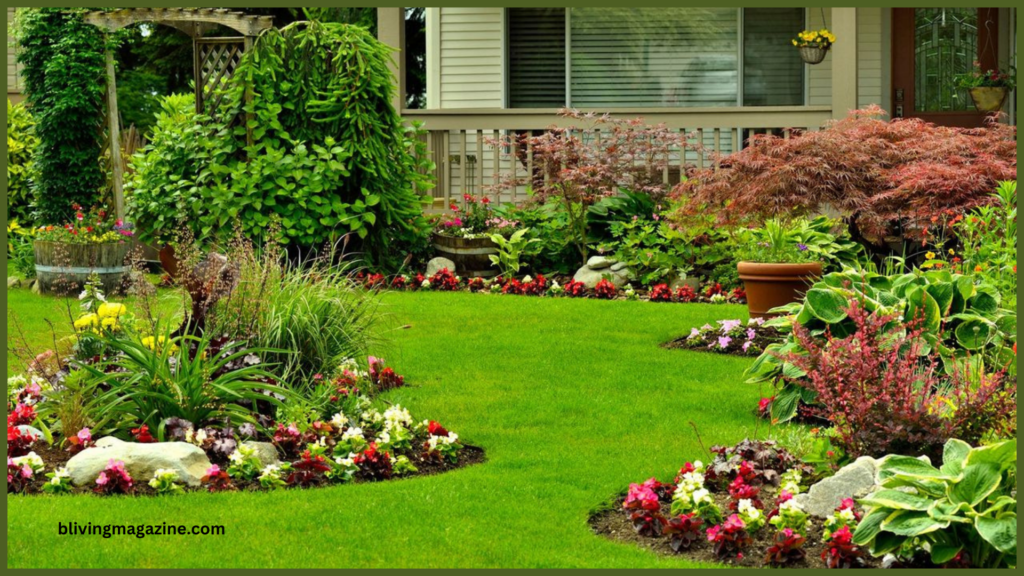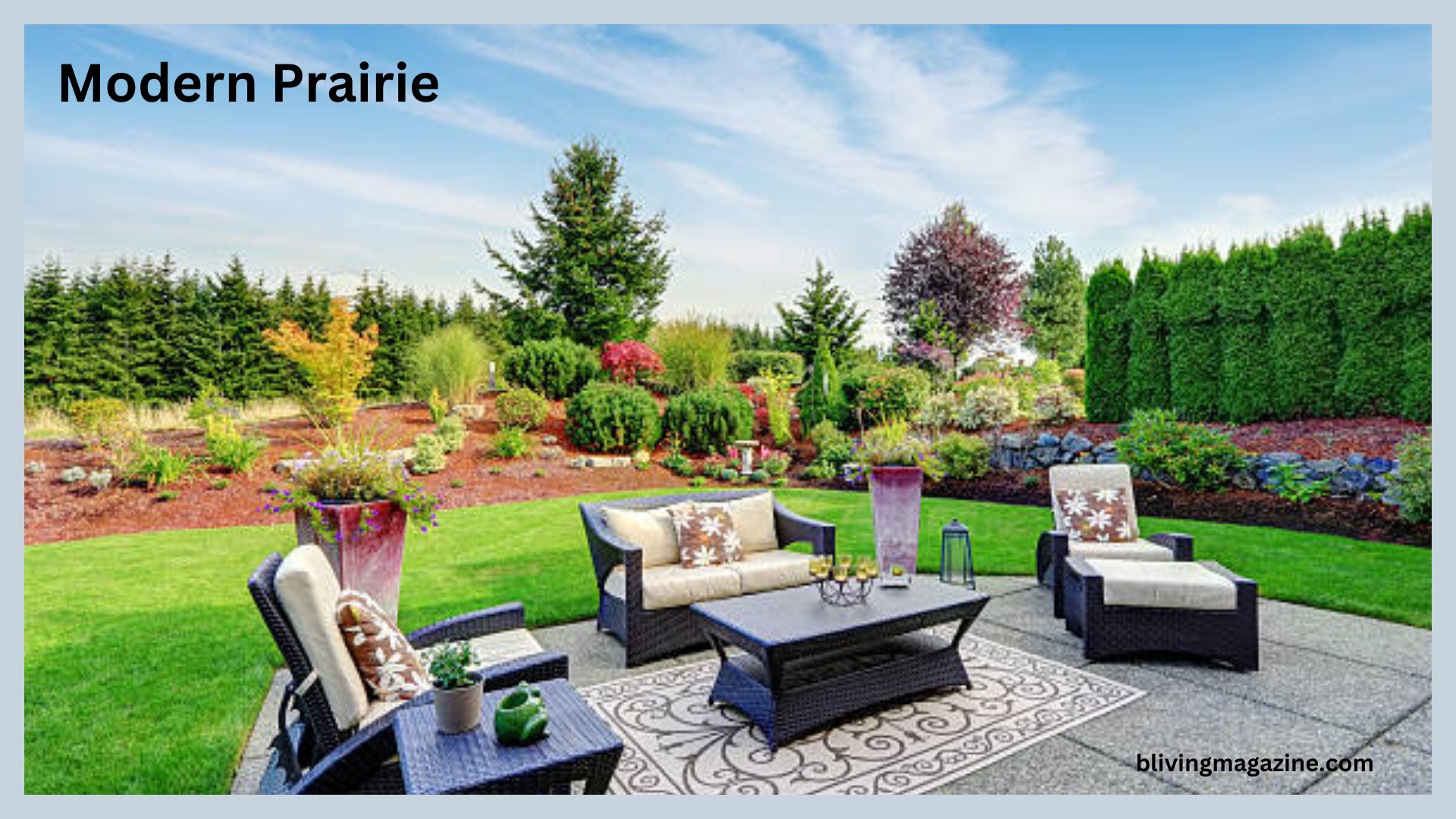Modern prairie landscaping represents a harmonious blend of nature and design, focusing on sustainable practices, native plants, and a seamless integration with the environment. Rooted in the ecological principles of prairie ecosystems, this landscaping style combines functionality with aesthetics to create outdoor spaces that are both beautiful and environmentally friendly. In this article, we explore the core elements, benefits, and strategies of modern prairie landscaping to provide a comprehensive guide for anyone looking to embrace this nature-inspired approach.
Understanding Prairie Landscaping
Prairie landscaping draws inspiration from the vast grasslands that once covered large portions of North America. These ecosystems are characterized by native grasses, wildflowers, and a diverse array of flora and fauna that have adapted to thrive in their local environments. Modern prairie landscaping takes these principles and applies them to residential, commercial, and public spaces, emphasizing biodiversity, low maintenance, and environmental sustainability.
This style diverges from traditional manicured lawns and gardens, favoring a more naturalistic approach. By mimicking the structure and composition of prairie ecosystems, modern prairie landscaping creates dynamic and visually appealing spaces that require fewer resources and foster a deeper connection to the natural world.
Core Elements of Modern Prairie Landscaping

The modern prairie aesthetic is defined by several key elements that contribute to its distinct and sustainable character. These components include:
1. Native Plants
Native plants are the cornerstone of prairie landscaping. These species have evolved to thrive in local climates and soil conditions, making them resilient and low-maintenance. Native grasses, such as big bluestem, switchgrass, and little bluestem, are often combined with colorful wildflowers like coneflowers, black-eyed Susans, and milkweed. These plants not only enhance the landscape’s visual appeal but also provide essential habitats for pollinators and wildlife.
2. Layered Planting
Layered planting is a hallmark of prairie design, mimicking the natural structure of grasslands. Taller grasses and wildflowers form the upper layer, while shorter groundcovers and low-growing plants create a lush understory. This approach adds depth and texture to the landscape, ensuring year-round visual interest and ecological benefits.
3. Naturalistic Design
Unlike formal gardens with rigid lines and geometric patterns, prairie landscaping embraces a naturalistic design that flows organically. Curved pathways, irregular plant groupings, and soft edges contribute to a sense of movement and harmony. This design philosophy encourages a more immersive experience, inviting people to explore and engage with the landscape.
4. Sustainability
Modern prairie landscaping prioritizes sustainable practices to minimize environmental impact. Techniques such as rainwater harvesting, permeable paving, and the use of compost and mulch help conserve resources and reduce waste. Additionally, prairie landscapes require less irrigation, fertilizers, and pesticides compared to traditional lawns, making them a greener choice.
Benefits of Modern Prairie Landscaping
Adopting a modern prairie approach offers numerous benefits for homeowners, communities, and the environment. These advantages include:
1. Biodiversity
Prairie landscapes support a wide variety of plant and animal species, promoting biodiversity. Native plants attract pollinators such as bees, butterflies, and birds, which play a crucial role in maintaining healthy ecosystems. By creating habitats for these creatures, prairie landscaping contributes to the preservation of local wildlife.
2. Low Maintenance
One of the most appealing aspects of prairie landscaping is its low maintenance requirements. Native plants are well-adapted to local conditions, making them drought-tolerant and pest-resistant. Once established, prairie landscapes require minimal watering, mowing, and weeding, saving time and resources.
3. Environmental Benefits
Prairie landscaping has significant environmental advantages. Native plants improve soil health by preventing erosion and enhancing nutrient cycling. Their deep root systems help filter pollutants, improve water infiltration, and sequester carbon, contributing to climate change mitigation. Additionally, reduced reliance on chemical fertilizers and pesticides protects water quality and reduces pollution.
4. Aesthetic Appeal
The natural beauty of prairie landscapes is undeniable. Their diverse plantings, vibrant colors, and dynamic textures create visually stunning environments that change with the seasons. Prairie landscapes offer a sense of tranquility and connection to nature, enhancing the overall well-being of those who experience them.
Designing a Modern Prairie Landscape
Creating a modern prairie landscape requires thoughtful planning and execution to achieve the desired balance of functionality, aesthetics, and sustainability. Here are some key steps to consider:
1. Site Assessment
Begin by assessing your site’s conditions, including soil type, sunlight exposure, and drainage. Understanding these factors will help you select the appropriate native plants and design elements for your landscape.
2. Plant Selection
Choose a diverse mix of native grasses, wildflowers, and groundcovers that thrive in your region. Aim for a variety of species that bloom at different times of the year to ensure continuous color and ecological benefits. Local extension offices or native plant nurseries can provide valuable guidance on suitable plant choices.
3. Layout and Design
Develop a layout that incorporates naturalistic design principles. Create meandering pathways, clusters of plants with varying heights, and open spaces to mimic the look and feel of a prairie. Consider how the landscape will evolve over time and plan for seasonal changes.
4. Installation
Prepare the site by removing existing vegetation and amending the soil as needed. Plant your chosen species in groupings that reflect their natural growing patterns. Mulch around plants to retain moisture and suppress weeds, and water them regularly until they are established.
5. Maintenance
While prairie landscapes are low-maintenance, they still require some upkeep. Remove invasive species, monitor for pests, and trim back plants as needed to maintain their health and appearance. Periodic burning or mowing can also be used to rejuvenate the landscape and promote biodiversity.
Integrating Prairie Landscaping with Modern Living
Modern prairie landscaping is not limited to large, expansive spaces; it can be adapted to fit urban and suburban settings as well. Rooftop gardens, community parks, and residential yards can all benefit from prairie-inspired designs. Incorporating features such as outdoor seating areas, fire pits, and water elements can enhance functionality and create inviting spaces for relaxation and socializing.
Prairie landscaping also complements modern architectural styles, providing a cohesive and harmonious connection between indoor and outdoor spaces. By integrating elements such as green roofs, living walls, and sustainable building materials, homeowners can create holistic environments that reflect their commitment to sustainability and design excellence.
Also Read: What Is a Home Improvement Contractor and Why Do You Need One?
Conclusion
The art of modern prairie landscaping offers a unique opportunity to create beautiful, sustainable, and nature-inspired outdoor spaces. By embracing native plants, naturalistic design, and environmentally friendly practices, this approach provides numerous benefits for individuals and communities alike. Whether you’re looking to enhance your backyard, contribute to local biodiversity, or reduce your ecological footprint, modern prairie landscaping is a timeless and meaningful choice. As more people recognize the value of sustainable design, the modern prairie aesthetic will continue to inspire and shape the future of landscaping.
